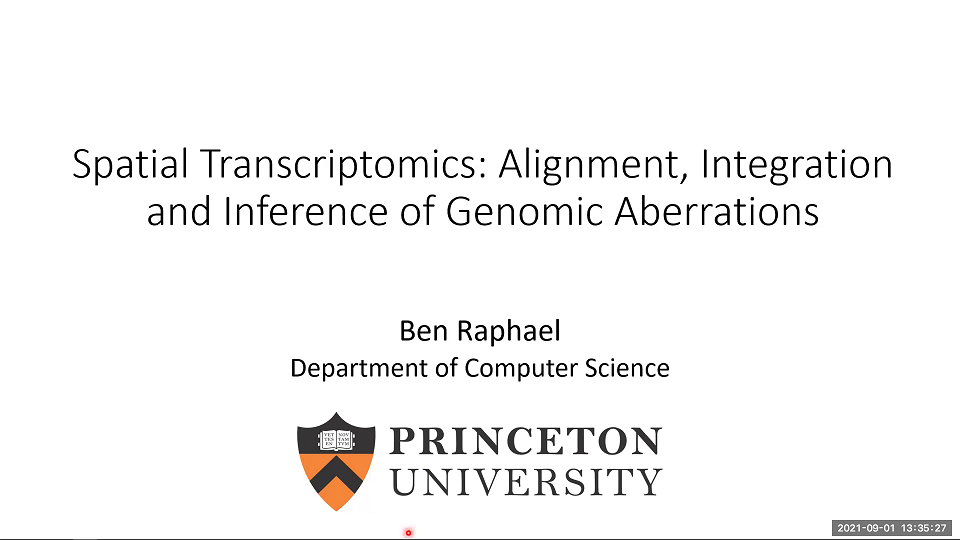Spatial transcriptomics: Alignment, integration, and inference of genomic aberrations
Presenter
September 1, 2021
Abstract
Spatial transcriptomics is a new technology that produces paired measurements of RNA expression and 2D spatial coordinates at thousands of locations, or spots, from a tissue slice. While spatial transcriptomics data can be analyzed using traditional techniques developed for bulk or single-cell RNA sequencing data, these techniques do not leverage spatial correlations between RNA expression across spots. I will present two methods that use spatial correlations to improve analysis of spatial transcriptomics data. First, I will present STARCH, a method to detect genomic copy number aberrations from spatial transcriptomics data. Copy number aberrations are duplications and deletions of large segments of the genome and are common in many cancers. STARCH simultaneously models the correlated changes in expression across genomic segments that result from copy number aberrations and the correlations in expression between neighboring spots that are due to the spatial organization of clones within a tumor. Next, I will present PASTE (Probabilistic Alignment of Spatial Transcriptomics Experiments), a method to align and integrate spatial transcriptomics data across adjacent tissue slices leveraging both transcriptional similarity and spatial distances between spots. PASTE computes a pairwise alignment of spatial transciptomics data from adjacent tissue slices using Fused Gromov-Wasserstein Optimal Transport and combines pairwise alignments of adjacent slices to construct a 3D representation of the tissue. PASTE also aligns and integrates multiple spatial transcriptomics slices into a single center, or consensus, slice. I will demonstrate the advantages of these two methods on spatial transcriptomics from normal and cancer tissues.
